
by Charles Bonniwell | Apr 21, 2023 | Editorials

Kelly Brough
The Denver voters at the April election winnowed down a large field of 16 potential candidates for Mayor to Kelly Brough and Mike Johnston. We could have done worse, like when we three times elected the worst mayor in the city and county’s history, Michael Hancock. Was there a candidate who could have become a mayor like Wellington Webb, Frederico Peña, Robert Speer, and Benjamin Stapleton, who with all their faults, helped build and maintain Denver as an incredibly great place to live? We don’t know. But our choice now is between Mike Johnston and Kelly Brough.
Another troubled former great city, Chicago, has elected Brandon Johnson to be mayor with the strong endorsement of the all-powerful teachers union. The press has been warning that teachers unions across the country are trying to elect their candidates to the detriment of the citizenry. The endorsement of the Denver teachers union is however, kryptonite in Denver. Even the incredibly desperate Westside Investments refused to disclose in its unsuccessful campaign to destroy Park Hill Golf Course open space that the Denver Classroom Teachers Union had endorsed its “Yes on 20.” The teachers union is endorsing no one in the Denver race, but there is no doubt it is backing the former Denver union teacher Mike Johnston.
Even more concerning is the avalanche of dark money that is coming in for Johnston from across the country. There is never money without promises and Johnston refuses to say what those promises were. Johnston’s cavalcade of standard liberal bromide positions earned him the also unwanted endorsement of the hedge fund-owned Denver Post, whose endorsement has lately become a political kiss of death.
With nothing new or interesting about Johnston, we turn to Kelly Brough. People in Glendale know a great deal about the former head of the Denver Chamber of Commerce. She succeeded now U.S. Senator Michael Bennet as chief of staff for then Mayor John Hickenlooper before going over to the Chamber. Unfortunately, while the people in Glendale found Bennet a delight to work with, not so much the perpetually dour Brough. People in Glendale almost don’t recognize the campaign photo of Brough with a huge smile. She has the backing of most of the Denver business community which unfortunately includes the high-density apartment developers who want to gobble up every inch of park and open space in the City and County of Denver.

Mike Johnston
When asked by The Denver Post whether she supported the redevelopment of the Park Hill Golf Course property most of her answer was such gobbledygook that the Post refused to print it. But at least she was not bought off by Westside Investments like Johnston who supported the open space grab.
She does have the endorsement of former mayor Wellington Webb, which is one of the few endorsements that carries weight with us. Sadly, she counter-balanced that with promoting endorsements from two of the worst former mayors in the metro Denver area — Adam Paul of Lakewood, and Herb Atchison of Westminster.
If we had to pick a former Denver mayor she most politically resembles, it would be William H. McNichols, who reigned in Denver from 1968 to 1983. He did little during those 15 years to improve the city, but he was not interested in destroying it either like Hancock.
Brough has had a lot of pain in her life, with her father being murdered and her husband killing himself, so she can empathize with others in pain today in Denver. Moreover, she can could grow and shine in the position of mayor. As we said politics is a matter of choice and here we choose and endorse Kelly Brough.
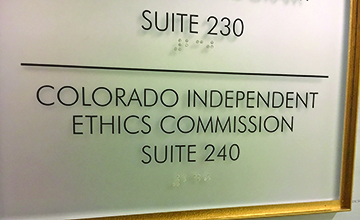
by Charles Bonniwell | Mar 21, 2023 | Main Articles
PART I
by Charles C. Bonniwell

David vs. Goliath: The little town of Glendale is fighting the IEC for the rights of all citizens and home rule cities in Colorado.
The City of Glendale and its officials have been caught in a maze of Star Chamber proceedings before the Colorado Independent Ethics Commission (IEC). They have been fighting for eight long years with no end in sight over a minor mix up in a City Council meeting in May of 2015. They, like almost anyone and everyone who has appeared before the IEC, have tales of woe to tell.
The IEC was created when the Colorado voters approved Amendment 41 to the state constitution titled “Ethics in Government” in 2006, promoted by now Governor Jared Polis, who was then co-chair of “Colorado for Clean Government.” Polis was made a multi-millionaire due to his mother’s floral business and objected to usually poorly paid politicians and bureaucrats getting gifts or any benefit worth more than $50.
Limitless Power

All Powerful: The IEC, a little-known bureaucratic entity, has become so powerful, that even the biggest political heavyweights are no match for it.
But the key to the Glendale quagmire and the horror shows of many who find themselves before the IEC was a little noticed catch-all provision of Article XXIX, Section 5, which says that the IEC can “hear complaints, issue findings, and assess penalties … on ethics issues … under any other standards of conduct and reporting requirements as provided by law.” Under an expanded interpretation of that provision the IEC may one day control the entire state, including doctors, lawyers, architects, judges, and anyone else if it wishes.
The key to the IEC assuming more and more power over the state and its citizens was to do it slowly while hopefully not alarming the courts or the media until it became too powerful to stop. The IEC stayed under the radar until a lawyer, Bill Leone, who headed up a New York firm’s white collar crime unit in New York City, was appointed by Governor John Hickenlooper. The appointment was to his everlasting regret. The IEC is composed of five members, one appointed by the Governor, one by the State House of Representatives, one by the Chief Justice of the Colorado Supreme Court, and one by the other four commissioners. No more than two members can belong to the same political party.
Leone

Power Is Where Power Goes: New York lawyer Bill Leone ruled over the IEC for eight years with an iron fist and crushed all who appeared before the organization.
Considered by his critics to be a narcissist megalomaniac, Leone began expanding the IEC powers in every direction after his appointment. A former interim U.S. Attorney, he was considered for firing by the U.S. Justice Department. He was passed over for a permanent position. Nominally a Republican, Hickenlooper believed he was, in reality, a Democrat he could safely appoint.
The IEC would eventually become known by political insiders as a place where ethics was ignored but where you could destroy your political opponents no matter how powerful. One of those shadowy lawyer insiders was a Democrat interim Secretary of State Bernie Buescher, appointed by Democrat Governor Bill Ritter when Republican Mike Coffman resigned as Secretary of State in 2009. During his two years as Colorado Secretary of State he learned he could bring devasting charges on minor matters to destroy political opponents. He brought that knowledge to the Denver law firm of Ireland Stapleton in an “of counsel” position in their Grand Junction office.
The Meatgrinder
The IEC’s power comes from the fact that the IEC acts as judge, jury, and executioner, with no checks or balances. All one has to do is file a complaint, no matter how trivial, claiming any minor conflict of interest or gift over $64. The IEC, behind closed doors in secret meetings, determines if it has “jurisdiction” which depends on arbitrary, obtuse standards of which there is little rhyme or reason, but appears to be whether the members politically like or dislike the target citizen.
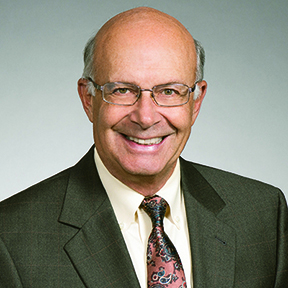
Insider: Bernie Buescher, a shadowy lawyer, is believed by those in the know to be an expert in the dark arts involving the IEC.
If they would like to go after the target citizen, they appoint an investigator which is normally its executive director Dino Ioannides, or it is farmed out to private investigators. The accused have no rights or protection. The IEC decides whether it wants to go ahead or not and if so an attorney from the Colorado Attorney General’s office acts as prosecuting attorney with the IEC as the judge and jury. The complainant who has started the process has no role or obligations and is not required to spend money. The target citizen faces tens of thousands or even hundreds of thousands of dollars in fees if he or she wishes to fight the complaint.
If the IEC finds for its own attorney and finds the target guilty, then it imposes its penalty, which for gifts, is twice the amount of the gift, but in other cases who knows. While the target citizen is often facing a couple of hundred dollars fine they must also pay massive attorney fees, which is why most target citizens simply fold and admit guilt regardless of the veracity of the complaint. If by some miracle you are found not guilty of the complaint, you are not entitled to a reimbursement.
The complainant incurs no costs in the proceedings and has the thrill of its political opponent pleading guilty to an ethics complaint. If the target citizen does fight the charges, they will incur the huge legal fees and will likely be found guilty by the IEC kangaroo court. If the IEC doesn’t take the case you still have the advantage of politically embarrassing your political opponent/ citizen target by filing an ethics complaint.
Scott Gessler
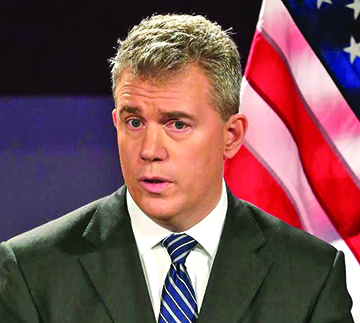
Victim: As Colorado Secretary of State, Scott Gessler became the first victim of the IEC’s expanded powers.
The first political whale that was captured by Leone and the IEC was Republican Colorado Secretary of State Scott Gessler. He had flown to Tampa in 2012 to attend and speak at the “National Election Law Seminar,” a two-day continuing legal education conference. Under Colorado law, each of five statewide elected officials, including the Secretary of State, has access to a modest annual discretionary fund to spend “in pursuance of official business.” Left-leaning Colorado Ethics Watch filed a complaint asserting it did not consider Gessler’s trip in furtherance of official business and charged that Gessler had failed to turn in receipts for another $117 taken from the discretionary fund.
The Colorado Supreme Court in 2018 in Smith v. Gessler shot down the argument that the IEC’s jurisdiction was limited to “matters of gifts, influence pleading, and standards of conduct, and reporting requirements that expressly delegate enforcement to the IEC.” Instead, the court bought hook, line, and sinker that jurisdiction of the IEC covers any complaints “under any other standards of conduct … as provided by law.”
Gessler’s legal fees fighting the IEC, which were covered by the state, eventually reached approximately a half a million dollars. The total fine was only a little over one thousand dollars. The IEC as a political monster was born. Political insiders, both Republican and Democrat, knew that filing a complaint with the IEC would likely bankrupt a target citizen if they sought to fight it.
John Hickenlooper
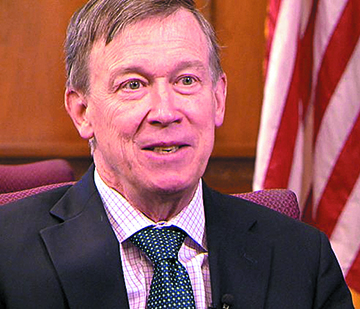
Victim 2: Former Governor John Hickenlooper was so broken by the IEC, that he stopped fighting in order to end the proceedings.
After Leone’s four-year term was up on the IEC in 2017, Governor Hickenlooper apparently refused to reappoint the power-hungry Leone. So Leone went to the Republican president of the Senate, Kevin Grantham, to reappointment him for another four year term. Hickenlooper was about to learn about political payback from the now all-powerful IEC and Commissioner Leone.
Hickenlooper had traveled at various times on planes of friends while he was governor. Hickenlooper was running for U.S Senate against incumbent Republican Cory Gardner. Republican operatives like fomer Republican Speaker of the House Frank McNulty had seen what Democrats had done to Scott Gessler and decided two could play the game. They had Republican interest groups file a complaint for those trips and other items and Commissioner Leone was waiting with bated breath.
Even the former Governor did not have any chance against the IEC, even with the state covering his legal fees involved in fighting the IEC. When he refused to comply with the IEC subpoena, the IEC went to court and the judge ruled his refusal was in contempt. Hickenlooper refused to testify and basically laid over so as not to delay the inevitable, as he was suffering politically. He incurred a fine of $2,750 but at least was free from the political monster that the IEC had become.
Part II Next Edition
In Part II next month, learn how the IEC regularly rolls over average citizens without a thought. Learn how the Village of Glendale was trapped in the IEC meatgrinder, and how it has tried to fight off the all-powerful IEC.

by Charles Bonniwell | Mar 17, 2023 | Editorials
Editorial —
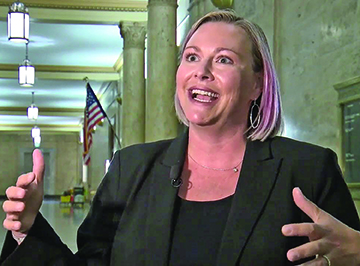
Amanda Sawyer, Bought and Paid For By Developers

Buyer of Politicians and Liberal Interest Groups, Andrew Klein
Nineteenth century showman and con artist P.T. Barnum’s most famous purported saying is: “There is a sucker born every minute.” Westside Investment Partners and its head Andrew Klein certainly appear to believe that to be true of Denver. At the PBS12 mayoral debate all the candidates were jointly asked:
“Raise your hand if you are receiving campaign donations from Westside Investment Partners or any related entities who own golf course property and are pushing for its development.”
No one raised their hand but, in fact, former state Senator Mike Johnston, state Senator Chris Hansen, and city Councilmember Debbie Ortega all took money from Klein and support the high-density development on Park Hill Golf Course. This is enough that no one on the Editorial Board will vote for or support any of those individuals for mayor.
Denverite has reported Westside Investment Partners’ leaders and staff are supporting eight City Council candidates, including Amanda Sawyer who ran four years ago against high-density development. Sawyer, who quickly became almost unbearably smug, self-important, and arrogant upon assuming her city council position, has now become a high-density developer backer. This demonstrates that there must be something in the water in District 5 as her two predecessors, Marcia Johnson and Mary Beth Susman, also became corrupted by developers soon after coming into office. Incumbents in Denver are almost impossible to beat, especially when backed by developer money, but Michael Hughes is trying to unseat Sawyer in District 5 and we wish him the best.
It isn’t just politicians that Klein and Westside Investment Partners have corrupted with their money. A Who’s Who of venerable liberal organizations including Volunteers of America, Habitat for Humanity, St. Thomas Episcopal, Greater Metro Denver Ministerial Alliance, Denver Classroom Teachers Association, and many others, signed onto one of most dishonest ad campaigns to get Denver voters to approve their high-density development on April 4th.
The development is being sold on the ridiculous canard that because there is a city-wide shortage of high-quality, affordable housing we must approve their development of 2,550 new homes on half of 155 acres of open space. The most revolting assertion is that it causes the “creation of the fourth largest park in the city.” By taking half the land now for high-density development no one but a fool would believe that they will not be back for the other half in a blink of an eye.
The hucksters who told us at one time that we had to destroy South Vietnam in order to save it are back at it to tell you that you have to destroy a 155-acre park to save it. The homes will not be affordable, but will go for Cherry Hills prices and disrupt a wonderful Black neighborhood for rich White yuppies.
The destruction of Park Hill Golf Course is Mayor Michael Hancock’s final middle finger to the people of Denver. In 12 years as mayor he has made the city so unlivable that he is moving to Miami when his term is up. Hopefully Denver voters will give him the middle finger back by voting “NO” on Referred Question 20.

by Charles Bonniwell | Dec 16, 2022 | Editorials
Winter is just beginning but come spring the quadrilateral event of electing a new mayor for the City and County of Denver will arrive. Denver almost never throws out an incumbent mayor so it’s the only chance a person seeking the position will have for the next 12 years. The incumbent mayor Michael Hancock is almost universally deemed the worst mayor in the city’s 164-year history beating out even Mayor Wolf Londoner who was removed from office for corruption in 1891. Nonetheless, we Denverites have elected him three times including once unopposed. Thus, once you are elected as mayor of Denver you are unlikely to leave office with the exception of term limits.
Since this is a once in 12-year opportunity, 22 individuals have announced their candidacy covering an extraordinarily diverse group, including a Republican. City politics is basically a Democrat only event these days. The candidates are divided between the corporatists who backed Hancock for three terms, and the radicals who helped elect various councilmembers two years ago.
The radicals have a large group to pick from, including: Lisa Calderón, the Executive Director of Emerge Colorado, an organization that promotes left-wing women candidates for office, and who ran four years ago for mayor; Deborah Ortega, a term limited councilwoman for the city at large who has served in government for almost 40 years; and Leslie Herod, a term limited state representative from Denver.
The leading corporatist candidate is Kelly Brough, the former longtime President and CEO of the Denver Metro Chamber of Commerce, and former chief of staff for then mayor John Hickenlooper. To the great annoyance of Channel 9News’ Marshall Zelinger, some white men have also announced they are running, including: Chris Hansen, who represents both Denver and Glendale in the state senate; and Mike Johnston, who also has represented northeast Denver in the state senate and ran for governor until John Hickenlooper entered the race. Zelinger indicated that he did not feel “comfy” with white men running when women and persons of color had already entered the race. More than a few Channel 9News viewers noted that, as a white man himself, Zelinger should resign to provide an opportunity for women and persons of color to occupy a “comfy” position at Channel 9.
Do any of the candidates care about the ever-increasing cost of living in Denver beyond housing? Do any of them care about the quality of life for the average Denverite and not just the ever-growing army of the homeless? Do any of them care about the ever-diminishing parks and open space? Do any of them have any plans to bring back downtown from the wreckage that it has become?
Denver was once a beautiful city with an enormous number of parks and open spaces, as well as wonderful neighborhoods. Denver was far from perfect, but it took only 12 years of Hancock to destroy much of it. Will the next mayor be just another mayor like Lori Lightfoot of Chicago, or another developer whore like Hancock? Or will someone arise who is better and different? Over the next 90 days we will be looking intently if such a person exists and we hope you will do the same.

Thomas Wolf

Lisa Calderón

Terrance Roberts

Leslie Herod
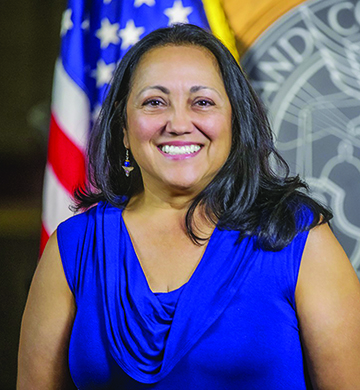
Deborah Ortega
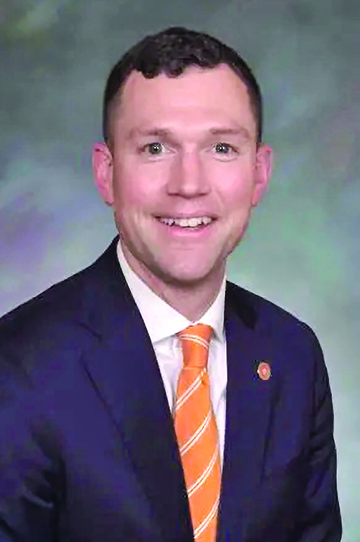
Chris Hansen

Kelly Brough

by Charles Bonniwell | Nov 17, 2022 | Editorials
 It took 20 years of hard work and persistence by a bi-partisan coalition of the Democrat Party and moderate establishment Republicans, headed by Colorado’s richest man, Phil Anschutz, to accomplish one goal. The election returns from the 2022 midterms are in and Colorado, at long last, has one-party Democrat rule. Incumbent Governor Jared Polis won by 20 plus points over Republican Heidi Ganahl. It’s not that Mr. Polis is so uniquely popular. Every Democrat candidate for statewide office in Colorado won close to double digits.
It took 20 years of hard work and persistence by a bi-partisan coalition of the Democrat Party and moderate establishment Republicans, headed by Colorado’s richest man, Phil Anschutz, to accomplish one goal. The election returns from the 2022 midterms are in and Colorado, at long last, has one-party Democrat rule. Incumbent Governor Jared Polis won by 20 plus points over Republican Heidi Ganahl. It’s not that Mr. Polis is so uniquely popular. Every Democrat candidate for statewide office in Colorado won close to double digits.
The State Senate went from 21 to 14 in Democrats favor to 24 to 11. In the State House it went from 41 to 24 in the Democrats favor to 48 to 17. In a terrible economy with high inflation and a Democrat President with low approval numbers how could this possibly be true? It’s easy. In over 20 years, as pointed out in last month’s editorial, we have gone from same day voting with 30-day registration requirements to same day registration, universal mail-in ballots with an almost month election period. Only the Democrats ballot harvest. They urge their members to cast their ballots immediately. That leaves Democrats three weeks to go house to house to harvest ballots and cure any faulty ballots.
Republicans are told by its leadership to all vote in person on election day and not to allow anyone to collect their ballots. Even without the enormous fraud that universal mail-in ballot and ballot harvesting encourages, there is no chance a Republican can win a statewide campaign under such circumstances.
Yet not a single prominent Republican has publicly protested this inherently unfair election process. In 20 years, they have not objected to any of more than a score of election process changes that have assured a one-party state from now to eternity. Former Republican state party chair and leading Republican Colorado Congressman Ken Buck has declared the process “the Gold Standard.” Former Republican Secretary of State Wayne Williams cut an advertisement with present Secretary of State Jena Griswold to the same effect, paid for with taxpayer dollars, which was continuously in the run up to the election.
Why would Phil Anschutz and the Republican establishment want to hand the state over permanently to the Democrats? Because it assures them, they will be permanently controlling the Republican party even if it is a permanent minority party. They can make deals with Polis for their own benefit. The Republican establishment cannot let the grassroots out of the bag because if they did, they could take over the state Republican party, and maybe even the state, which is exactly what has happened in Wyoming and Nebraska. All Anschutz has to do talk is talk to fellow billionaire Pete Ricketts, the two-term governor of Nebraska and president of the National Republican Governors Association, about what happens if everyday citizens get hold of a state party. It’s July 14, 1789, all over again.
Anschutz can also appreciate why Mitch McConnell withdrew money from the Republican senate candidates in Arizona and Nevada, so the Republicans lost by close margins and lost any chance of becoming the majority in the Senate. McConnell may have assured that Republicans are a minority in the U.S. Senate, but helped guarantee he would be the leader of that minority party.
So welcome to the one-party state of Colorado. Like all one-party states from North Korea to Cuba, the citizens will suffer greatly but the leaders of the uni-party will prosper extraordinarily.
Governor Polis celebrates one party rule in Colorado.




















